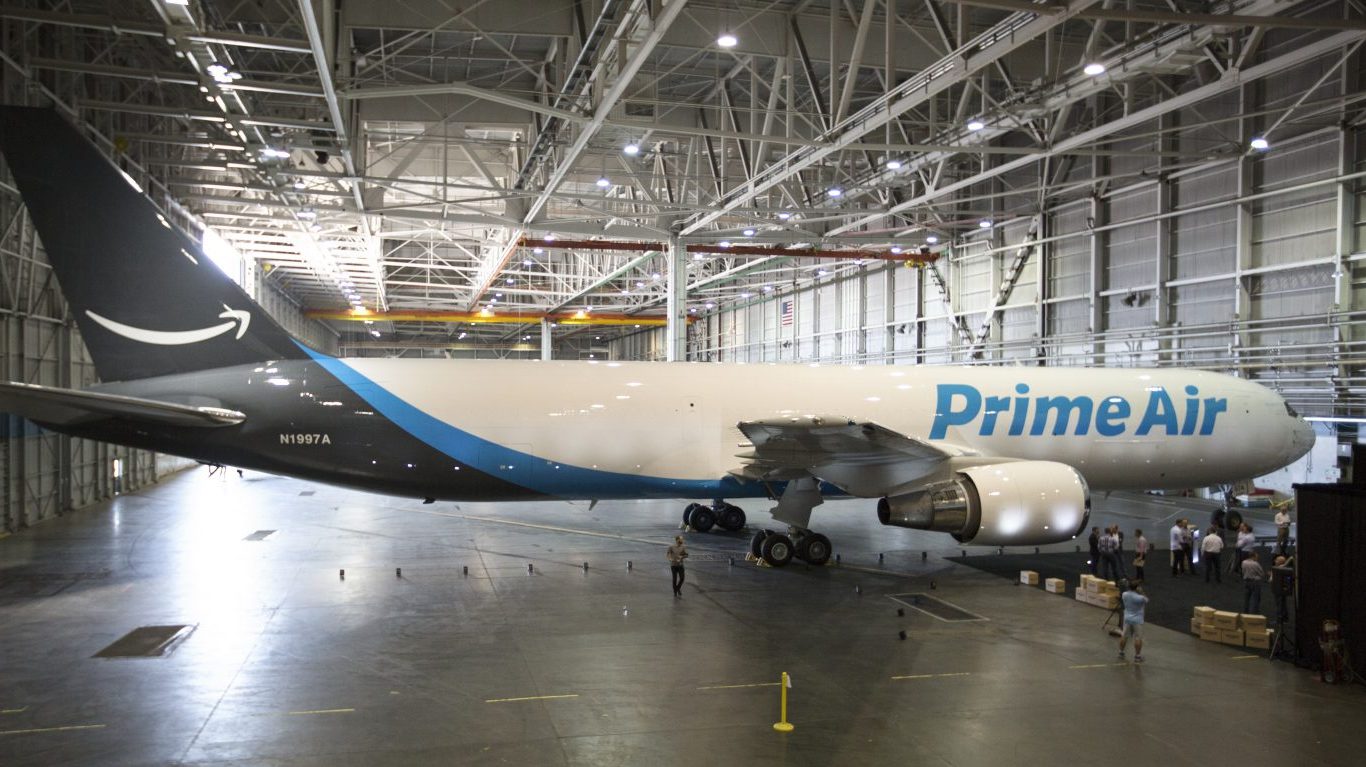
The Federal Trade Commission is about to file an antitrust lawsuit against Amazon, according to The Wall Street Journal. According to the report, the government says Amazon treats its own products better than those sold by other parties. The charges may also show that it treats outside partners poorly. Big companies have been broken up in the past. AT&T is the most recent example, in 1982. Amazon may be the next American corporation to which that happens. (These are 17 awful investments made by Amazon.)
[in-text-ad]
Amazon has two major divisions, one of which feeds the other financially. The separation of these would be logical. The first is the massive e-commerce operation. In the most recent quarter, Amazon’s North America and international e-commerce operations had a combined revenue of $112 billion and an operating income of $2.2 billion. For years, it has taken market share from America’s retailers, both their online operations and brick-and-mortar. However, its margins remain very small.
Amazon Web Services is arguably Amazon’s most successful business. The largest cloud computing operation in the world, it primarily competes with Microsoft and Google. It is growing rapidly. Its revenue in the most recent quarter rose 12% to $21.4 billion. Its operating income was $5.14 billion.
The subsequent division would happen within e-commerce. Amazon Prime Video competes with Netflix, Disney, Hulu and other streaming services. Prime Video has over 200 million subscribers. That makes it slightly smaller than Netflix but larger than the others. Amazon does not break out its revenue. The service is often part of Amazon Prime, which Amazon offers to build its e-commerce business. The spin-off of video would further weaken Amazon’s dominant position in the e-commerce market.
The final part of Amazon that would need to be separated into pieces is its cash, cash equivalents and marketable securities hoard. The total of these is about $50 billion. There is no simple calculator for distributing this among the new companies.
In a breakup, each Amazon shareholder would get shares in the three new companies. This would allow them to pick which of the three are winners and which are not.
Are You Still Paying With a Debit Card?
The average American spends $17,274 on debit cards a year, and it’s a HUGE mistake. First, debit cards don’t have the same fraud protections as credit cards. Once your money is gone, it’s gone. But more importantly you can actually get something back from this spending every time you swipe.
Issuers are handing out wild bonuses right now. With some you can earn up to 5% back on every purchase. That’s like getting a 5% discount on everything you buy!
Our top pick is kind of hard to imagine. Not only does it pay up to 5% back, it also includes a $200 cash back reward in the first six months, a 0% intro APR, and…. $0 annual fee. It’s quite literally free money for any one that uses a card regularly. Click here to learn more!
Flywheel Publishing has partnered with CardRatings to provide coverage of credit card products. Flywheel Publishing and CardRatings may receive a commission from card issuers.
Thank you for reading! Have some feedback for us?
Contact the 24/7 Wall St. editorial team.

